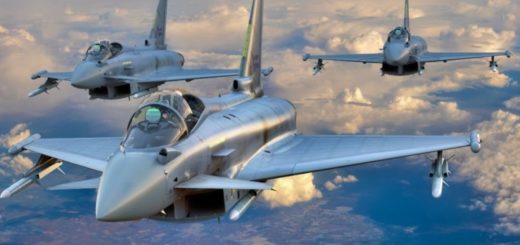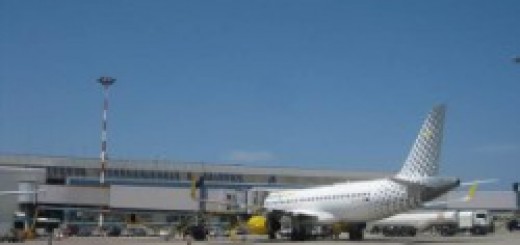Philippines wants to acquire new jets to counter growing Chinese threats in region

{loadposition bannertop}
{loadposition sidebarpub}
On June 18, 2025, the Philippine Air Force confirmed that acquiring new multi‑role fighter (MRF) jets remains a top priority even as an additional batch of 12 FA‑50 light combat aircraft is being procured under its Horizon 2 modernization plan. A PAF spokesperson emphasized that the FA‑50 acquisition, secured through a US $712.8 million deal with Korea Aerospace Industries last June 4, will proceed independently of the parallel MRF procurement initiative.Follow Army Recognition on Google News at this link
An F‑16V Viper in flight, one of the jets shortlisted by the Philippines to counter regional threats (Picture source: US DoD)
According to the Philippine News Agency, since 2019 the PAF has budgeted approximately US $1.18 billion for at least 12 new-generation MRFs under Horizon 2, with Saab’s JAS‑39 Gripen C/D and Lockheed Martin’s F‑16 Viper officially shortlisted. Additionally, Korea Aerospace Industries’ KF‑21 Boramae has formally entered the competition following a Request for Information from Manila last year, expanding the contest to at least a three‑way rivalry. Saab has also progressed negotiations: a June 2023 memorandum of understanding between Sweden and the Philippines paves the way for exporting 12 Gripen C/Ds MS20.
The JAS‑39 Gripen C/D is a fourth-generation multi-role combat aircraft developed by Saab of Sweden, optimized for both air defense and ground attack missions. It is powered by a single Volvo RM12 turbofan engine, a derivative of the General Electric F404, which delivers a top speed of Mach 2 and a combat radius of approximately 800 kilometers. One of its key features is the PS-05/A pulse-Doppler radar, capable of tracking multiple airborne targets and guiding beyond-visual-range (BVR) missiles such as the AIM-120 AMRAAM or Meteor. The Gripen C/D integrates an advanced electronic warfare suite that includes radar warning receivers, electronic countermeasures, and decoy dispensers, enabling effective self-defense in contested environments. The aircraft’s digital fly-by-wire system and open-architecture avionics allow for regular software upgrades, making it highly adaptable to future threats. Its short takeoff and landing (STOL) capability is especially suitable for operations from dispersed or damaged airstrips, and its cost-effective maintenance footprint and 10-minute turnaround time between sorties make it particularly attractive for nations with limited infrastructure.
In contrast, the Lockheed Martin F‑16V Viper represents the most advanced configuration of the globally proven F‑16 Fighting Falcon platform. Equipped with the AN/APG‑83 Scalable Agile Beam Radar (SABR), the F‑16V offers fifth-generation radar capabilities including high-resolution synthetic aperture radar (SAR) imaging, electronic beam steering, and multi-target tracking. It is powered by a General Electric F110 or Pratt & Whitney F100 engine, enabling speeds over Mach 2 and extended range with conformal fuel tanks and in-flight refueling. The F‑16V cockpit features a modernized avionics suite with a high-resolution center pedestal display, digital flight controls, and helmet-mounted cueing system for high off-boresight missile engagements. It can deploy a broad arsenal of smart munitions, including the JDAM, Paveway laser-guided bombs, and AIM-9X and AIM-120D missiles, allowing it to perform precision strike, suppression of enemy air defenses (SEAD), and air dominance missions. Both the Gripen and F‑16V are NATO interoperable, equipped with Link 16 datalinks, Identification Friend or Foe (IFF) systems, and secure communications, ensuring seamless integration with allied forces in joint operations.
These aircraft represent a significant leap in capability compared to the Philippines’ current FA‑50 fleet, which, while modern, is considered a light attack platform with limited air superiority functions. The Gripen and F‑16 are designed for full-spectrum missions, including air-to-air combat, deep strike, and electronic warfare. They also offer improved survivability, range, and mission systems that are essential for defending the country’s extensive maritime domain and securing its airspace in contested environments. The ability to engage threats at extended ranges with advanced sensors and weapons provides the PAF with a much-needed edge in both deterrence and operational flexibility.
The urgency to acquire advanced MRFs stems from rising tensions in the South China Sea, where the Philippines faces mounting pressure from Chinese military assertiveness. Beijing’s deployment of naval, air, and paramilitary forces across disputed territories has alarmed Manila, which sees advanced fighter jets as a strategic deterrent. China’s continued fortification of artificial islands and aggressive presence near Philippine-claimed areas in the West Philippine Sea have underscored the need for credible air power. By enhancing its aerial combat capabilities, the Philippines aims to demonstrate its sovereignty, protect national interests, and develop a credible air defense posture. The new fighters are expected to serve both as a deterrent and as a credible force in the event of escalation.

{loadposition bannertop}
{loadposition sidebarpub}
On June 18, 2025, the Philippine Air Force confirmed that acquiring new multi‑role fighter (MRF) jets remains a top priority even as an additional batch of 12 FA‑50 light combat aircraft is being procured under its Horizon 2 modernization plan. A PAF spokesperson emphasized that the FA‑50 acquisition, secured through a US $712.8 million deal with Korea Aerospace Industries last June 4, will proceed independently of the parallel MRF procurement initiative.
Follow Army Recognition on Google News at this link
An F‑16V Viper in flight, one of the jets shortlisted by the Philippines to counter regional threats (Picture source: US DoD)
According to the Philippine News Agency, since 2019 the PAF has budgeted approximately US $1.18 billion for at least 12 new-generation MRFs under Horizon 2, with Saab’s JAS‑39 Gripen C/D and Lockheed Martin’s F‑16 Viper officially shortlisted. Additionally, Korea Aerospace Industries’ KF‑21 Boramae has formally entered the competition following a Request for Information from Manila last year, expanding the contest to at least a three‑way rivalry. Saab has also progressed negotiations: a June 2023 memorandum of understanding between Sweden and the Philippines paves the way for exporting 12 Gripen C/Ds MS20.
The JAS‑39 Gripen C/D is a fourth-generation multi-role combat aircraft developed by Saab of Sweden, optimized for both air defense and ground attack missions. It is powered by a single Volvo RM12 turbofan engine, a derivative of the General Electric F404, which delivers a top speed of Mach 2 and a combat radius of approximately 800 kilometers. One of its key features is the PS-05/A pulse-Doppler radar, capable of tracking multiple airborne targets and guiding beyond-visual-range (BVR) missiles such as the AIM-120 AMRAAM or Meteor. The Gripen C/D integrates an advanced electronic warfare suite that includes radar warning receivers, electronic countermeasures, and decoy dispensers, enabling effective self-defense in contested environments. The aircraft’s digital fly-by-wire system and open-architecture avionics allow for regular software upgrades, making it highly adaptable to future threats. Its short takeoff and landing (STOL) capability is especially suitable for operations from dispersed or damaged airstrips, and its cost-effective maintenance footprint and 10-minute turnaround time between sorties make it particularly attractive for nations with limited infrastructure.
In contrast, the Lockheed Martin F‑16V Viper represents the most advanced configuration of the globally proven F‑16 Fighting Falcon platform. Equipped with the AN/APG‑83 Scalable Agile Beam Radar (SABR), the F‑16V offers fifth-generation radar capabilities including high-resolution synthetic aperture radar (SAR) imaging, electronic beam steering, and multi-target tracking. It is powered by a General Electric F110 or Pratt & Whitney F100 engine, enabling speeds over Mach 2 and extended range with conformal fuel tanks and in-flight refueling. The F‑16V cockpit features a modernized avionics suite with a high-resolution center pedestal display, digital flight controls, and helmet-mounted cueing system for high off-boresight missile engagements. It can deploy a broad arsenal of smart munitions, including the JDAM, Paveway laser-guided bombs, and AIM-9X and AIM-120D missiles, allowing it to perform precision strike, suppression of enemy air defenses (SEAD), and air dominance missions. Both the Gripen and F‑16V are NATO interoperable, equipped with Link 16 datalinks, Identification Friend or Foe (IFF) systems, and secure communications, ensuring seamless integration with allied forces in joint operations.
These aircraft represent a significant leap in capability compared to the Philippines’ current FA‑50 fleet, which, while modern, is considered a light attack platform with limited air superiority functions. The Gripen and F‑16 are designed for full-spectrum missions, including air-to-air combat, deep strike, and electronic warfare. They also offer improved survivability, range, and mission systems that are essential for defending the country’s extensive maritime domain and securing its airspace in contested environments. The ability to engage threats at extended ranges with advanced sensors and weapons provides the PAF with a much-needed edge in both deterrence and operational flexibility.
The urgency to acquire advanced MRFs stems from rising tensions in the South China Sea, where the Philippines faces mounting pressure from Chinese military assertiveness. Beijing’s deployment of naval, air, and paramilitary forces across disputed territories has alarmed Manila, which sees advanced fighter jets as a strategic deterrent. China’s continued fortification of artificial islands and aggressive presence near Philippine-claimed areas in the West Philippine Sea have underscored the need for credible air power. By enhancing its aerial combat capabilities, the Philippines aims to demonstrate its sovereignty, protect national interests, and develop a credible air defense posture. The new fighters are expected to serve both as a deterrent and as a credible force in the event of escalation.








